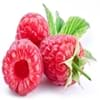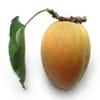Health Benefits
Cancer prevention, Heart care, Prevents macular degeneration, Reduces blood circulation problems
Asthma treatment, Bronchitis treatment, Cancer prevention, Heart care, Increases metabolic rate
General Benefits
Anti-inflammatory properties, Controls blood sugar levels, Digestive aid, Eye care, Helps in weight loss
Anti-inflammatory properties, Controls blood pressure, Digestive aid, Eye care, Healing of wounds, Maintains healthy cholesterol level, Strengthens bones, Treatment of sinusitis, Treatment of common cold
Skin Benefits
Anti-aging benefits, Brightens and lightens complexion
Anti-aging benefits, Brightens and lightens complexion, Skin cleansing, Treatment of acne, Treatment of dark spots
Hair Benefits
Acts as moisturizer, Regulates hair growth, Shiny hair
Prevents hair loss
Allergy Symptoms
Breathing difficulty, Eczema, Hives, Itching, Nasal congestion, Runny nose, Sneezing, Watery eyes, Wheezing
Abdominal pains, Itching in tongue and other parts of mouth, Sneezing, Swelling, Tingling sensation in wrist and face, Vomiting, Wheezing
Side Effects
Allergic reaction
Causes swollen mouth, Allergic reaction, Diarrhoea, Nausea, Skin rash, Vomiting
Best Time to Eat
Best if taken as a breakfast (or empty stomach), As a snack in the late afternoon, Don't eat after meal, Morning time (before lunch)
Best if taken as a breakfast (or empty stomach), As a snack in the late afternoon, Eat the fresh ones, avoid mixing with any other foods, don't eat after meal., Morning time (before lunch)
Vitamin B5 (Pantothenic Acid)
Vitamin C (Ascorbic Acid)
Vitamin K (Phyllochinone)
Phytosterol
Not Available
Calories in Fresh Fruit with Peel
Not Available
Calories in Fresh Fruit without Peel
Not Available
Type
Berry
Berry, Tropical
Varieties
Amity, August Red, Boyne, Canby, Caroline, Comet, Dinkum, Dorman Red, Latham, Meeker, Black Hawk, Hayda, Lauren, Meeker and Latham
Smooth Cayenne, Abacaxi, Red Spanish and Queen
Color
Black, Purple, Red, Yellow
Yellow
Taste
Sweet
Strong, Sweet, Tart
Origin
Europe, North Asia
Central America, South America
Grows on
Trees
Not Available
Soil Type
Sandy loam
Clay, Sandy loam, Well-drained
Climatic Conditions
Cold
Hot, Sunny
Facts about
- There are more than 200 varieties of raspberries.
- In USA, 90% of the raspberries are grown in Washington, California and Oregon.
- They do not ripe after they are picked.
- A raspberry contain 100 to 120 seeds.
- A single pineapple takes 3 years to reach maturation.
- Pineapple is not an apple, but is actually a berry.
- The name is with reference to its resemblance to pine cones.
- Pineapple is sweeter if scales are more.
Top Producer
Russia
Costa Rica
Other Countries
Azerbaijan, Canada, Mexico, Poland, Serbia, Spain, Ukraine, United Kingdom, United States of America
Brazil, India, Philippines, Thailand
Top Importer
United States of America
United States of America
Top Exporter
Poland
Costa Rica
Botanical Name
Rubus Idaeus
Ananas comosus
Synonym
Not Available
Ananas sativus
Subkingdom
Tracheobionta
Tracheobionta
Division
Magnoliophyta
Magnoliophyta
Class
Magnoliopsida
Liliopsida
Subclass
Rosidae
Commelinidae
Family
Rosaceae
Bromeliaceae
Species
R. idaeus
A. comosus
Generic Group
Rose
Pineapple
Compare Raspberry and Pineapple
It is important compare Raspberry and Pineapple as both the fruits have a different nutritional value. Their comparison can be done on the basis of their vitamin and mineral content, calories, benefits as well as characteristics, making it easier for us to choose the best fruit for our diet. Their general health benefits are as follows:
Raspberry Benefits: anti-inflammatory properties, controls blood sugar levels, digestive aid, eye care and helps in weight loss.
Pineapple Benefits: anti-inflammatory properties, controls blood pressure, digestive aid, eye care, healing of wounds, maintains healthy cholesterol level, strengthens bones, treatment of sinusitis and treatment of common cold.
Fruits are also used as a remedy for various hair problems. The hair benefits of Raspberry are: acts as moisturizer, regulates hair growth and shiny hair and hair benefits of Pineapple are: prevents hair loss. Some fruits are known to cause allergic reactions. The allergy symptoms of first fruit are: breathing difficulty, eczema, hives, itching, nasal congestion, runny nose, sneezing, watery eyes and wheezing and the symptoms of second fruit are: abdominal pains, itching in tongue and other parts of mouth, sneezing, swelling, tingling sensation in wrist and face, vomiting and wheezing. Get sorted Raspberry vs Pineapple comparison with the help of fruit comparison tool by fruitvs.com.









